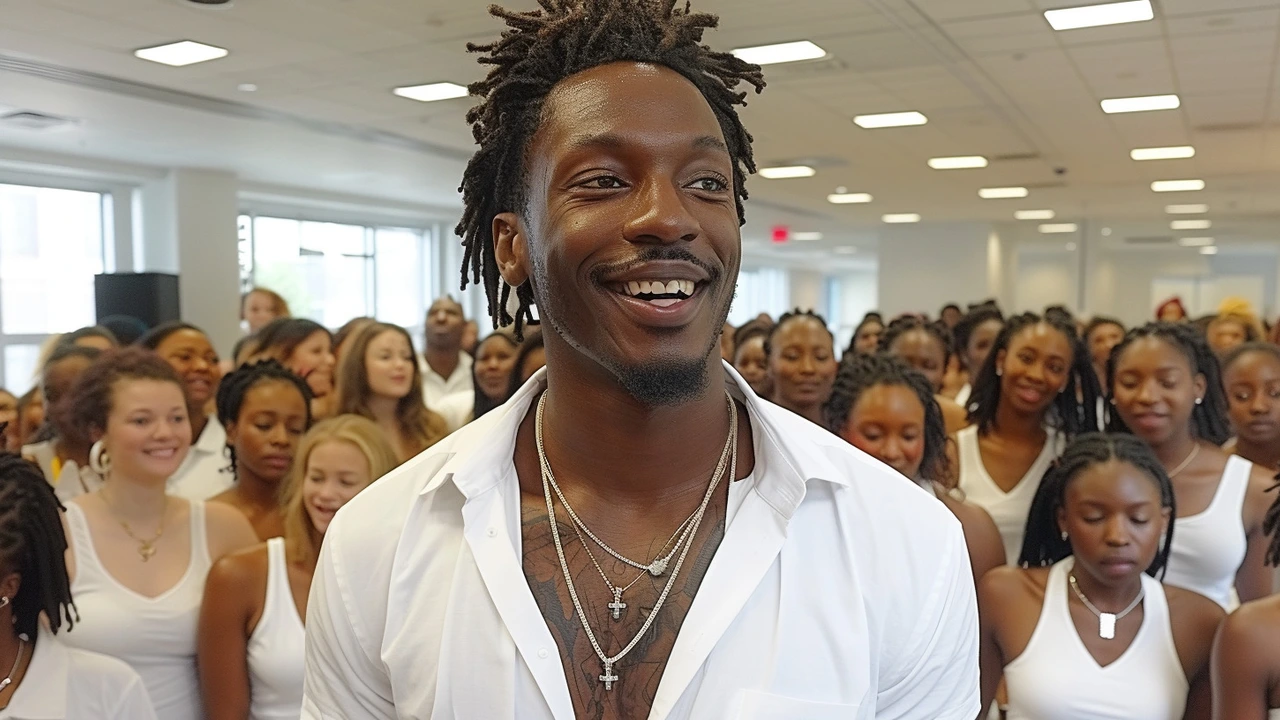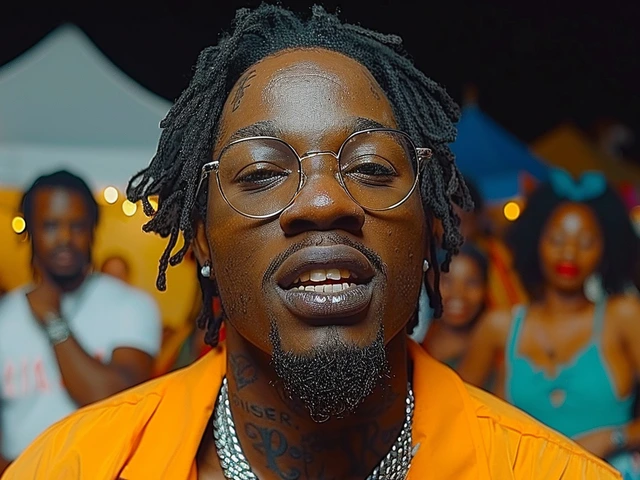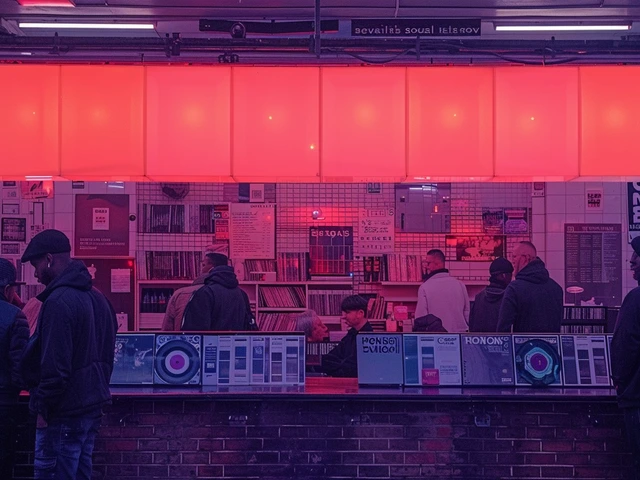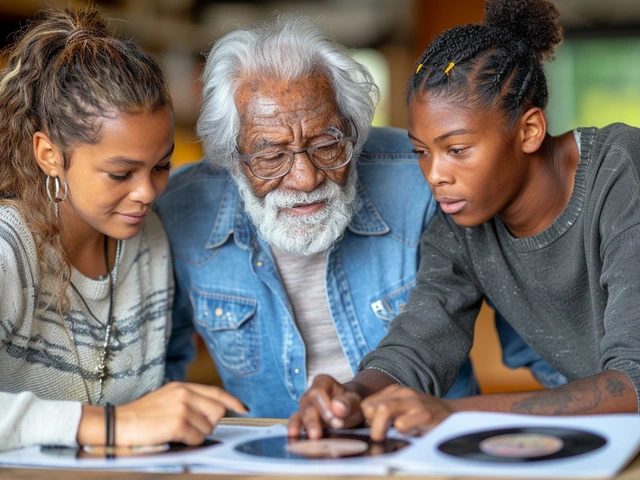Finding Your Rhythm in the Chaos of Dubstep
Dubstep: the electronic dance music genre that's like riding a rollercoaster with your ears. But hey, why should your ears have all the fun when your feet could join in too? Yes, my dance-loving friends, today, we’re going to dance our way through the wub-wub-wubs and womp-womps of dubstep, which I assure you, is not as intimidating as trying to pronounce those onomatopoeic beats. You might be thinking, "Jasper, you're a blogger, not a dance instructor." And you're right, but what I lack in professional dance moves, I make up for with enthusiasm and some handy research. Learning to dubstep dance is like trying to become a wizard at Hogwarts. You need patience, practice, and probably a cool hat. Though I can’t provide the latter, stick with me, and we’ll work some magic on that dance floor.
Getting the hang of dubstep dance feels like attempting to tame a mystical unicorn at first – it's wild, unpredictable, and a permit might or might not exist. But before you know it, you could be the one dictating the pace, dropping the bass, and putting those electrifying tunes in their place: right under your spell-casting feet. Did I once try to mimic the moves in front of my cat, Mr. Whiskers, who looked at me as if I was preparing to launch into orbit? Perhaps. But that’s a story for another time. Let’s focus on your feet and the steps that await because it's about to get a lot more rhythmic in here.
Understanding the Beast: Dubstep Background and Beat Recognition
First things first, appreciating dubstep means getting cozy with its beats and drops – those heart-stopping moments in a track that make you feel like your soul momentarily left your body to join an alien rave. They say dubstep originated in South London in the early 2000s, but I'd like to think it was discovered when a DJ accidentally dropped his bass into a wormhole. Understanding the structure of the music is crucial. The tempo is usually around 140 beats per minute but feels like it's at 70 because of the half-time rhythm. In dubstep, there's often a 'call and response' pattern to the beat, which is super handy when you're trying to choreograph your footwork to it.
Imagine you're a detective, and the beat is your suspicious character; you're trying to anticipate its next move so you can pounce! Now, does everybody have a particular strategy? Nope. But through listening, you can pick up on those patterns and rhythms that will inevitably become your dance cues. Constantly expose yourself to different dubstep tracks. Wear those headphones while doing the dishes, the laundry, or while creeping out of an awkward conversation at a party. Make dubstep your new best friend, the kind you study closely, and soon, you'll be predicting its moves like a seasoned gambler at a Vegas slot machine.
Starter's Guide: Basic Dubstep Moves to Know
Before you run, you've got to walk. And before you dubstep, you've got to...step, I suppose. There are a few basic moves to familiarize yourself with. The 'Hit' is like you're a human drum, responding to the music with sudden tensing movements – "the robot" on steroids, if you will. The 'Wobble' is as it sounds – your body mimicking a bowl of jelly during an earthquake. Then there's 'The Dime Stop' which is where you move fluidly and then suddenly freeze like you're a bronze statue, and someone's taking a picture. Does it sometimes feel awkward? Absolutely. But so does riding a camel for the first time, and look how that turned out for tourism in Egypt!
The aim is not to become these moves, but rather, incorporate them into your routine like subtle ingredients into a recipe. If you make a cake that's all flour, you're gonna end up with a bread situation – fascinating but deeply troubling. Similarly, if you only 'Hit', you're not dancing; you're basically in Morse code conversation with the speakers. Mix and match, learn the tempo, blend the moves; be the Chef Gordon Ramsay of dubstep dance, minus all the yelling and kitchen nightmares.
The Practice Makes Perfect Approach
Alright, theorists have it that practicing for 10,000 hours will make you an expert at anything, but who has time for that? Instead, set aside time every day to bust out some moves. It's like watering a plant – consistent care results in growth. I have neighbors who'll testify to my "daily dance watering" sessions, as they've witnessed my silhouette against the curtains flailing in what I hope looks like rhythmic expression. I'm waiting for their standing ovation any day now. Dance in front of a mirror, record yourself, or call on a brave, non-judgmental friend to watch. Keep your eyes peeled for what works and scrap what looks like involuntary spasms.
Dancing is as much about feeling as it is about technique. If you've ever seen a child dance, it's pure, uninhibited expression... not always rhythmic, but worthy of a participation ribbon at least. As adults, we become self-conscious, start to overthink and suddenly the legs that helped us climb mountains become about as coordinated as a giraffe on a treadmill. Yet, practice is the great equalizer. You'll stumble, fall, probably scare your pets with abrupt movements, but gradually, with repetition, everything becomes more fluid. You'll feel less like a fish out of water and more like a... well, a slightly more graceful fish in the water.
Feeling The Music: Let Emotions Lead the Way
Emotion drives dubstep dance more than anything. You have to feel it in your bones; if your soul doesn't feel like it's surfing on sound waves, we need to tap deeper. A track comes on, and it's not just the bass drop that hits – it's a storm of sentiments, a cacophony of feelings. That's when your movements become more than moves; they translate your innermost vibes onto the dance floor. Ever danced at home alone to your favorite jam? You weren't thinking about the moves there; you were embodying the essence of Skrillex meets Swan Lake. It's cathartic, like screaming into a pillow, but sexier because... well, dance.
Can you force emotions? Ask any B-grade actor – you can sure try. But in the rhythm of dubstep, it's not about contriving feelings; it’s about unlocking them. There's a raw power to it, a primordial call that your body responds to. When training, engage with the tracks that resonate - that make your heart rate rise and cause an instinctive foot tap. That's where your dance spirit animal lies. It's less 'Step Up' and more 'Animal Planet', but with cooler soundtracks. My own eureka moment happened mid-cherry pie, with a song so gripping, I dropped my fork and let loose an impromptu robot that morphed into something I can only describe as 'interpretive'.
Personal Style: Crafting Your Unique Brand of Dubstep Dance
Everyone has that secret ingredient that makes their grandma's recipe unbeatable – perhaps it's love, maybe it's a dash of extra salt. Your dubstep dance is the same; cultivate what makes you, you. Been told you have arms like a wriggly octopus? Fantastic – incorporate those tentacles into a move. People enjoy authenticity, maybe even more than perfectly executed choreography. Your style is your signature on the canvas of dance; it's the difference between a reproduction and an original painting.
How to find your style? Experiment, exaggerate, and most importantly, embrace your quirks. I'll tell you a little story; I once entered a dance contest where my main move involved mimicking a confused penguin. It wasn't planned; it just happened in the heat of the moment. Did I win? No. Did I become a local legend known as 'Penguin-boy'? Perhaps. But it was my style, and I owned it. You don't have to go full penguin, but allow yourself room to be distinct. Borrow influences from other dance forms, bring in elements of storytelling, or even drama – become the Shakespeare of the dance floor, but with less tights and tragedy.
Mixing it Up: Including Other Dance Styles
Now, sticking to purely dubstep moves is like only ever eating potatoes for every meal. Potatoes are great, don't get me wrong, but have you tried them with a little cheese, some gravy, perhaps a side of steak? This is where fusion comes in – combine hip hop, popping, or even ballet with dubstep to create a culinary masterpiece of movement. It's like a "choose your own adventure" book but with less reading and more sweating.
I recall blending in a bit of salsa into a dubstep routine once – imagine that, spicy Latin flavor infused with the electric shock of dubstep beats. Did I look like an electrocuted matador? Probably. But it was different, it was fresh, and most importantly, it was fun. So don't be afraid to hybridize. Drag in whatever other genres or moves feel right and give them the dubstep twist. Remember, the pioneers of every art form were once ridiculed before they were revered. Who's to say you're not the next big fusion dance influencer, ready to set the world on fire with your cha-cha-cha meets chainsaw synthesizers?
Using Your Space Wisely: Floor Craft in Dubstep Dance
Understanding, owning, and manipulating the space around you is key. Also, if you're dancing in a studio or social setting, knowing how to not send someone to the ER with an accidental flailing limb is a plus. Think of your dance area as a chessboard; each move should be strategic, intentional – conquering the squares of your board bit by bit. Or, imagine you're painting a mural; the floor is your canvas, and your steps are your strokes.
Innocent bystanders aside, spatial awareness adds to your dance aesthetic. It's not just about the moves you do but how you travel between them – a seamless flow that's enchanting to watch. It's like watching algae sway in the ocean; it's mesmerizing, it's natural, it's... hopefully not slimy. But you get my point. When I first started, I treated the space like a hot potato – constantly bouncing off the edges, never staying put. It was less dance, more 'Jasper trying not to get burned'. Learning to use space efficiently is like developing a good relationship with time, it's about balance.
Networking and Finding Inspiration
Don't go at it alone – dance is a communal ritual that dates back to the dawn of time (give or take a few millennia), and it's meant to be shared. Find a community, take a class, or be that person who starts a dance circle at parties. Engage with other dancers, share moves, steal them shamelessly (with credit given, of course), and then tweak them to make them your own. This interchange of ideas is like cross-pollination among bees; it’s how the ecosystem thrives. Some of my best moves are stolen, I mean, borrowed – with enthusiasm and the givers' consent, no less.
Inspiration comes from watching others. That could mean going to shows, binge-watching dance videos, or spectating street performances. It's about exposure; soak in different styles, techniques, and energies. I personally have a notebook that's like a dance scrapbook – snips and clips of ideas and inspirations, a little treasure chest of creativity. And yes, sometimes inspiration is two left-footed – awkward, rarely on time, and often unpredictable – like a quirky aunt at a family reunion. Embrace it when it hits, and use it to fuel your dancing fire. Every once in a while, you'll find a gem that shines a new light on your dance path, guiding you in unpredictable yet thrilling directions.
Celebrating Every Milestone: The Power of Positive Reinforcement
Dancing is a journey with milestones, not a sprint with a finish line. Celebrate every one of them – from the first time you don't look like you're being attacked by invisible bees to the moment you realize you've danced an entire song in perfect sync with the beat. Reward yourself with kindness, self-love, and perhaps some chocolate (or your reward of choice, I don't judge). Cultivating a positive mind space is essential, because believe me, there will be days when your dancing shoes seem to develop a mind of their own.
Positive reinforcement is the psychological equivalent of a warm hug after a long day. It nurtures your motivation like a delicate flower in a bed of wild dancing thorns. I remember hitting a dance move I’d been battling with for weeks, and the sheer triumph was akin to conquering Everest in pajamas – a tad absurd but deeply satisfying. That victory dance was sweeter than any audience's applause because it was self-acknowledgement. Applaud your efforts, pat your back, and do the 'victory dance' – you've earned every step, every drop of sweat, and every beat that you've conquered.
Learning to dance dubstep is no walk in the park – it's more like a frantic sprint through a forest where the trees are dropping sick beats, and the wildlife is judging your every move. But it's also a wildly fun adventure, an expression of self, and a celebration of music and movement. So, keep these steps close to your heart (or on your screen), and step, hop, and drop your way to dubstep mastery. Who knows, in the end, you might just find your heart beating in perfect sync with that wub-wub. Happy dancing, my fellow stepper!




Write a comment